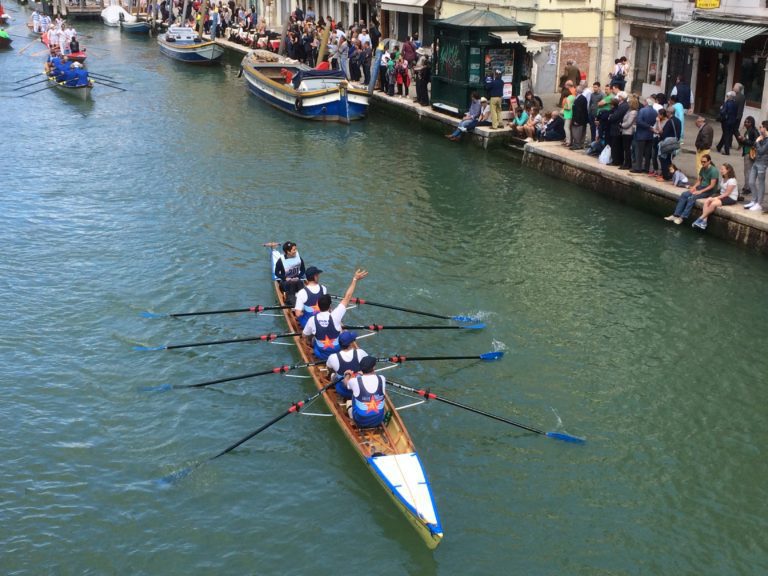A discussion about the photo above got us thinking and looking in an online forum for some tips:
When thunderstorms approach while rowing there are three factors that determine where lightning will strike:
1) higher objects
2) how isolated is the object
3) extra pointed shape
The path that lightning travels from the cloud to the ground (technically: impedance) can be very convoluted. Most of the time, lightning tends to strike high, isolated, pointy objects. But there are no guarantees for that and the lightning could also strike further down or next to it.
Why are thunderstorms dangerous when rowing?
Rowers sit in the boat on the water and are therefore higher than their immediate environment. They are usually few or alone on the water. In addition, the boats have metalized outriggers and metal motor boats are nearby. Follow the motto for lightning:
If the lightning comes out, then you quickly go home!
Someone from our Facebook group writes about thunderstorms while rowing:
Pole #1: You’re on the water, which means a fine, flat, conductive surface. Pole #2: The lightning, a vertical electrostatic gradient that has who knows how many thousands of volts.
You are the only thing sticking out from that surface at that moment, so the charge concentration on your head can be enormous. Plus, you’re holding two conductive carbon oars, have conductive aluminum outriggers, and every surface of the boat is wet – these really are the worst conditions imaginable!
Conclusion: all activities in and near the water are a bad idea during storms and thunderstorms.
Please educate yourself more about lightning protection measures and avoid becoming part of a tragic statistic!




